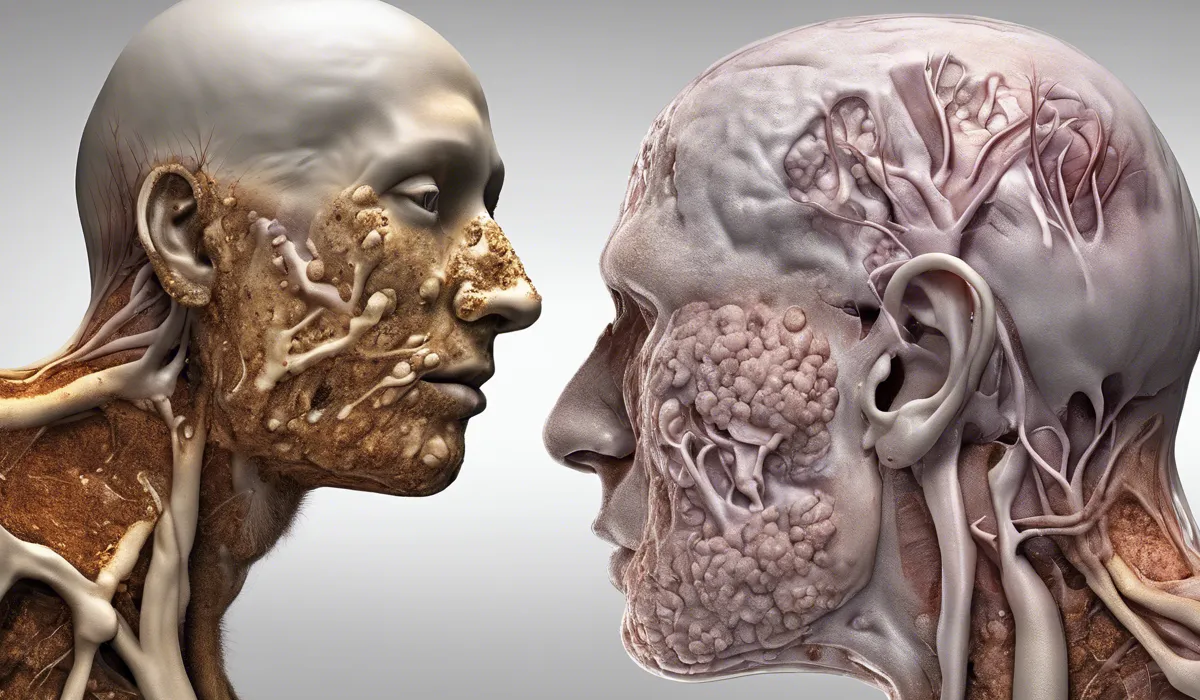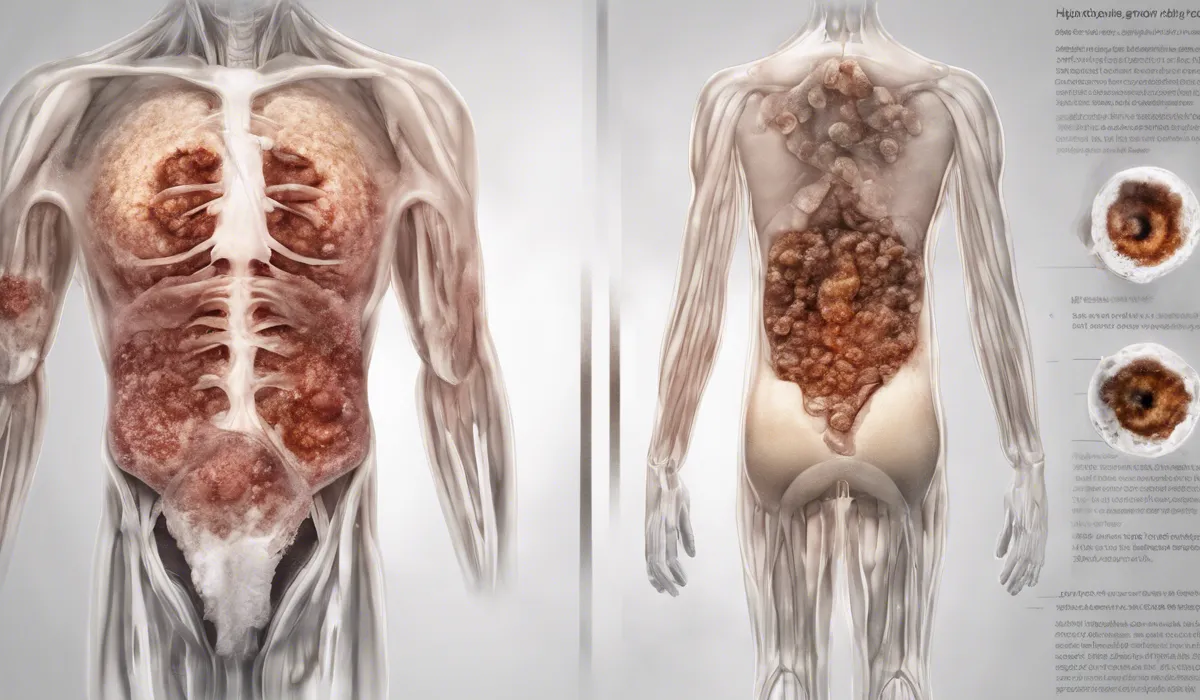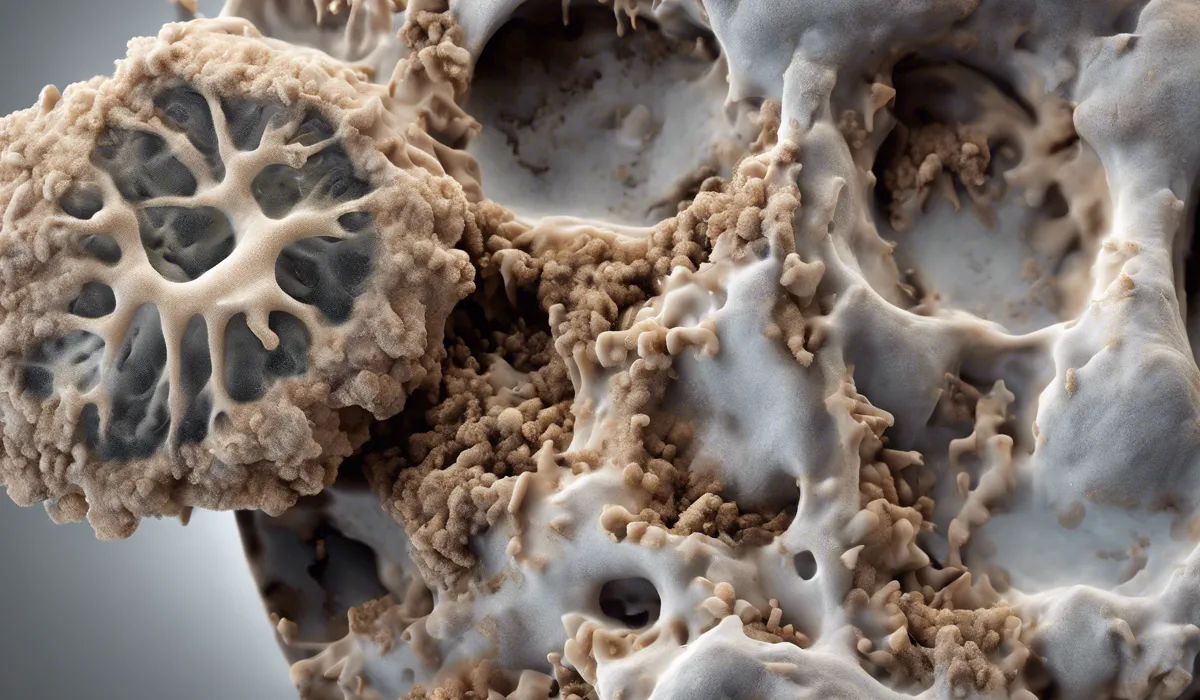Mold does not typically grow inside the human body. Certain fungi, which are similar to mold, can infect people, especially those with weakened immune systems, leading to conditions like aspergillosis. However, true mold growth in the body is very rare.
Understanding Mold and Its Interaction with the Human Body

Definition of Mold and Common Types
Mold is a type of fungus that can be found both indoors and outdoors. It is made of tiny organisms that can be black, white, orange, green, or purple.
Molds play a crucial role in nature by breaking down dead plants and trees. Some common types of mold include Aspergillus, Cladosporium, and Penicillium.
These molds are usually not harmful, but some people might be allergic to them.
How Mold Spores Operate in the Environment?
Mold spores are the seeds of mold. They are too small to see without a microscope and they float through the air, both inside and outside.
When they land on damp surfaces, they can start to grow. Mold spores are everywhere, and they are a normal part of the air we breathe.
However, when there are a lot of mold spores in the air, they can cause allergies and other health problems.
Typical Exposure to Mold in Daily Life
Every day, we come into contact with mold. It can be found in our homes, schools, and workplaces.
Mold can grow in damp areas like bathrooms, kitchens, and basements. It can also be found in foods, such as cheese and bread, and in the outdoors, in soil, plants, and rotting wood. Most of the time, the amount of mold we are exposed to is not harmful.
Conditions Mold Needs to Grow
Mold needs three things to grow: moisture, food, and the right temperature. It can feed on any organic material, including wood, paper, and fabric.
Mold grows best in warm, damp, and humid conditions. By controlling the moisture in our environments, we can prevent mold from growing.
Body’s Defense Mechanisms Against Mold
Our bodies have ways to protect us from mold. For example, our skin keeps mold spores on the outside.
Our immune system can also fight off mold spores that we breathe in. In healthy people, these defense mechanisms work well, and mold does not cause a problem.
However, if someone has a weak immune system, they might have trouble fighting off mold infections.
Mold-Related Health Conditions and Infections

Allergic Reactions and Respiratory Symptoms
Some people are allergic to mold. They might have symptoms like sneezing, itching, runny nose, and watery eyes.
Mold can also cause respiratory symptoms, such as coughing and wheezing, especially in people with asthma or other lung conditions.
Mold as an Allergen: Mold-Induced Asthma
For some people with asthma, breathing in mold spores can trigger an asthma attack. This is called mold-induced asthma. Keeping a clean, mold-free environment can help prevent these attacks.
Mycotoxins and Their Effects on Health
Some molds produce toxins called mycotoxins. These toxins can be harmful if we breathe them in, eat them, or touch them.
They can cause symptoms like headaches, dizziness, and nausea. In severe cases, they can lead to more serious health problems.
Opportunistic Infections in Immunocompromised Individuals
People with weakened immune systems are more likely to get mold infections. This includes people with HIV/AIDS, cancer, or those taking medications that suppress the immune system. These infections can be very serious and need medical treatment.
Specific Infections Caused by Mold in the Body
There are several types of infections that mold can cause in the body. These include:
Aspergillosis
Aspergillosis is an infection caused by the mold Aspergillus. It can cause symptoms like coughing, fever, and chest pain. It can be serious, especially for people with lung diseases or weakened immune systems.
Mucormycosis (Black Fungus)
Mucormycosis, also known as black fungus, is a rare but serious infection. It can affect the sinuses, lungs, and brain. It is more common in people with health problems like diabetes or those taking steroids.
Histoplasmosis
Histoplasmosis is an infection caused by breathing in spores from the fungus Histoplasma. It mostly affects the lungs and can cause symptoms like fever, cough, and fatigue. Most people recover without treatment, but it can be severe in some cases.
The Concept of “Mold Toxicity” or “Mold Illness”
Some people believe that exposure to mold can cause a chronic condition called “mold toxicity” or “mold illness.”
Symptoms are said to include fatigue, headaches, and memory problems. However, this concept is not widely accepted by medical professionals because there is not enough scientific evidence to support it.
Prevention and Treatment of Mold Infections

Strategies for Minimizing Mold Exposure
To minimize mold exposure, it is important to control humidity in your home, fix leaks, and clean up water damage quickly. Using air purifiers and dehumidifiers can also help reduce mold spores in the air.
Importance of Maintaining a Clean, Dry Environment
Keeping your environment clean and dry is key to preventing mold growth. This means regularly cleaning bathrooms, kitchens, and other damp areas, and making sure your home has good ventilation.
It is also important to dry wet areas within 24 to 48 hours to prevent mold from growing.
Recommendations for Those with Weakened Immune Systems
People with weakened immune systems should be especially careful to avoid mold. They should stay away from places where mold is likely to grow, like construction sites, compost piles, and wooded areas. They should also talk to their doctor about other ways to protect themselves.
Medical Interventions for Mold Infections
If someone gets a mold infection, there are treatments that can help. These include antifungal medications that can kill the mold.
In severe cases, surgery might be needed to remove the infected tissue. It is important to get treatment right away to prevent the infection from getting worse.
Ongoing Research and Emerging Treatments for Mold-Related Conditions
Scientists are always looking for better ways to prevent and treat mold infections. They are studying new antifungal drugs and treatments that can boost the immune system. This research could lead to new ways to help people who get sick from mold.
FAQs About Mold Growth in the Body
Can mold grow inside the human body?
True mold growth within the human body is extremely rare, as the internal body environment is typically not conducive to mold growth.
What types of fungi are similar to mold that can infect humans?
Fungi that can infect humans and are similar to mold include species that cause conditions like aspergillosis, candidiasis, and cryptococcosis, especially in individuals with weakened immune systems.
Is aspergillosis caused by mold?
Aspergillosis is caused by Aspergillus, a type of fungus that is similar to mold, which can infect the lungs and other parts of the body.
Can healthy people get fungal infections similar to mold infections?
While individuals with weakened immune systems are at a higher risk, healthy people can also get fungal infections, although it is less common.
How can one prevent fungal infections that are similar to mold?
Preventing fungal infections involves maintaining good hygiene, avoiding areas with high mold and dust concentrations, and for those with weakened immune systems, possibly taking antifungal medications as a preventative measure.
Final Thoughts
While true mold growth is not common in the human body, individuals, particularly those with compromised immune systems, can be susceptible to infections by mold-like fungi, such as the ones causing aspergillosis.
Mold itself is an unlikely body colonizer, with infections from similar organisms being a more relevant health concern.
